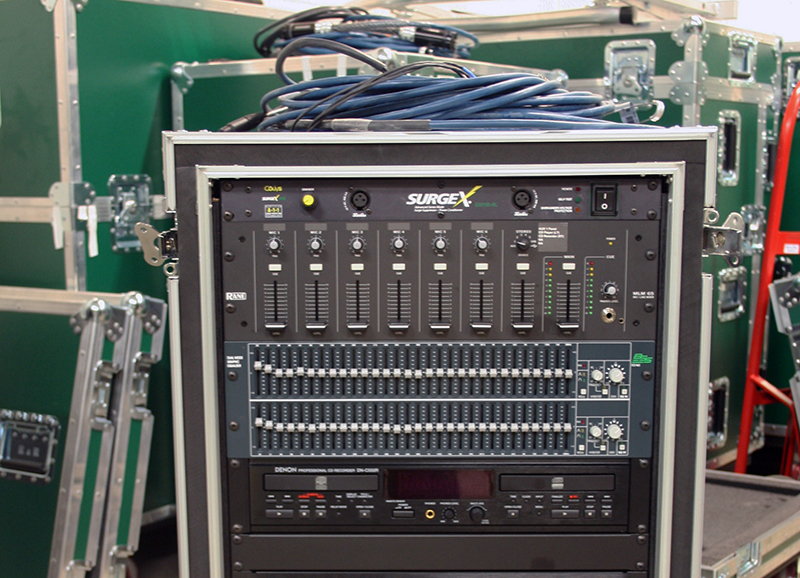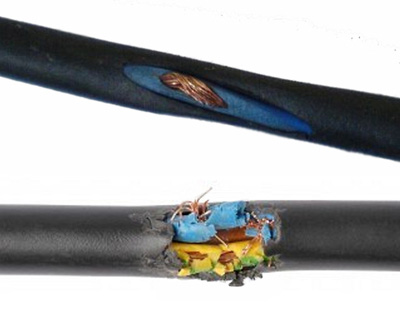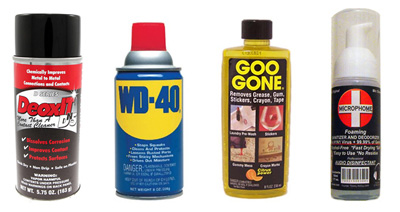
Cables
Without cable and interconnect, a PA system is just a bunch of unconnected gear. Yet cables seem to get the least attention – until they don’t work. After every usage, cables should be checked.
At the start of the wrap process, give the connector at that end the once over, to see if any pins or contacts are corroded or bent, and to confirm that the connector body is in good condition. Make sure strain relief is tight and that the cable jacket has not pulled out of the connector body.
Then during the wrap, slide a hand along the cable, feeling for flat spots, twists or other irregularities inside the jacket. Check the outer jacket for cuts or tears.
At the end of the process, check out the other connector, then secure the cable and lay it in the proper storage case. (Don’t forget to also do this with AC extension cords.)
Cables that are obviously damaged or that need another look should be set aside. A common practice to mark a suspect cable is to put a half-hitch knot on each end, warning others not to use until it gets checked out. Another tactic is to place pieces of gaff tape over the connector ends.
It really only takes an extra second or two per cable to check them as they’re wrapped, but the extra seconds spent can save minutes (or hours) of chasing down problems at the next gig.

All cables should also get a more extensive yearly check and some PM, including signal check with a cable tester and a thorough cleaning. When using a cable tester, check for intermittent signals by wiggling the cable where it joins the connector, and also flex the cable at any suspect spots to see if there is a break.
Many times a cable may have a break in one or more of the conductors, but the problem won’t rear its head until it’s flexed or wiggled.
With analog snakes, check the strain reliefs, and also open up the stage boxes to check the internal connections. Clean and lubricate snake reels per the maker’s instructions, and ditto for both fiber optic cabling and reels.
For general cleaning of outer cable jackets, I use a cleaner/degreaser called Simple Green. For removing sticky taperesidue (and this applies to other gear as well), I turn toGoo Gone, a Citrus-based cleaner.
When that won’t cut it, I switch to a stronger solvent called Goof Off, which contains acetone, so caution is strongly advised. It will eat through many materials, so just use enough to get rid of the gunk in the affected area, and then thoroughly wash the area clean of any remaining solvent.
Stands
Ubiquitous and ever supporting, stands are often forgotten about until something breaks. Mechanical stands need maintenance just as much as sound reinforcement equipment.
On mic stands, check the clutch regularly to make sure it operates smoothly. Replacement parts are available from manufacturers to rebuild a loose clutch mechanism. I also remove gaff tape residue (Goo Gone or Goof Off ), dry the tubes with a rag, then work a few drops of oil into the end threads so they screw into the bases and clips easily.

If I spot any damaged threads, I “chase” them (running a thread cutting die over a section to try to repair the threads) or simply cut off the end with a pipe cutting tool and make new threads on the fresh section of pipe.
Evaluate the stand’s base and replace any rubber isolation feet as needed. For tripod stands, check the legs and lubricate the hinge joint with a silicone- or Teflon-based lubricant. For loudspeaker stands, the process is similar, and also address rivets that hold the leg hinges as well as any safety stops on the stands.
In a previous article, I focused on racks and cases, and these items also require scheduled maintenance. Check all hardware in general, and make sure rack rails are firmly bolted to the rack shell. Clean and lubricate the handles and hasps with a silicone or teflon lubricant, and clean and grease the castors as per the caster manufacturer’s recommendations.
While it may seem like a large outlay of effort, keeping up with regular PM can reduce problems, enhance system performance, and save significant time and money in the long run.
